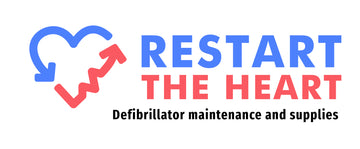Home Aid 101: Why You Should Have a Defibrillator at Home
First aid is crucial whenever an individual has been injured or is experiencing a medical emergency, especially at home. One such example is when someone experiences cardiac arrest, which is a cause for panic for everyone because it's an emergency that requires immediate attention. Luckily, a defibrillator can help avert this crisis.
A defibrillator is a medical device that shocks the heart back into a normal rhythm in cases of cardiac arrest. It's a crucial tool for first aid as it can help restart a stopped heart and potentially save a life. While most defibrillators are found in hospitals, portable variants known as the automated external defibrillator (AED) can be used in homes and public places. However, many don't consider using one because they think it's unnecessary until a crisis strikes. For this reason, we'll discuss what you need to know about AEDs.
How Defibrillators Work
Defibrillators work by sending an electrical current through the chest to the heart. This current helps restore the heart's rhythm and allows it to start beating again. The electrical current is delivered in two ways. The first is called a monophasic shock, which sends a single shock to the heart. On the other hand, the second is called a biphasic shock, which quickly sends two shocks. It's important to note that the shock must be delivered within a few minutes of the person going into cardiac arrest to be effective.
Defibrillators also monitor the heart's rhythm and will only deliver a shock if it detects an abnormal heart rhythm. This helps ensure that the shock is only delivered when it's needed.
The Difference with AEDs
As mentioned, AEDs are portable defibrillators. They are designed to be used by anyone without medical training. AEDs are equipped with voice instructions that guide the user through delivering the shock. AEDs also have a built-in computer that analyses the patient's heart rhythm and determines if a shock is needed.
The primary difference between a standard defibrillator and an AED is that a defibrillator is designed to be used by medical professionals. In contrast, an AED is designed to be used by anyone. AEDs are typically smaller and more portable than defibrillators, making them ideal for public settings. Additionally, AEDs are designed to be user-friendly and easy to operate.
Considerations When Getting an AED
AEDs are available in most medical supplies stores, but you don't just get the first one you see because you must consider certain factors, such as:
Size
AEDs may be portable, but they come in different shapes and sizes that may be more suitable for different scenarios. You should consider the size of the AED and where you will be using it to ensure it's ideal for the environment and that you can use it without any possible hindrances.
Features
Not all AEDs are created equal, especially regarding features. Some AEDs have more advanced features, such as voice prompts, real-time monitoring, and automatic electrode placement. On the other hand, others may be more basic but still provide all the necessary functions for using an AED.
User Friendliness
AEDs should be easy to use and understand. You should look for an AED with intuitive controls, clear instructions, and an easy-to-read display. You must also ensure that your AED comes with a user manual that you can refer to if you have any questions or need additional guidance.
IP Rating
The IP rating is a standard that classifies the level of protection a device has against dust and water. You should look for an AED with an IP rating of at least IP55, which means it is protected from dust and water jets. This will ensure that your AED is protected from water or dust exposure.
Warranty
You should look for an AED that comes with a warranty. This will ensure that if anything goes wrong with your device, you can repair or replace it without additional cost. A good warranty should cover the device for at least a year and include any necessary repairs or replacements.
Conclusion
An AED is a valuable tool that can save lives if someone experiences a sudden cardiac arrest. Because of this, you must ensure the AED you get is high-quality and comes with a good warranty. When you do, you can be confident that your device will be reliable and effective in an emergency.
If you’re looking for defibrillator supplies, Restart the Heart has what you need! We offer various selections, such as pads, batteries, and other first aid supplies, for affordable prices. Visit our website today and take your pick!

